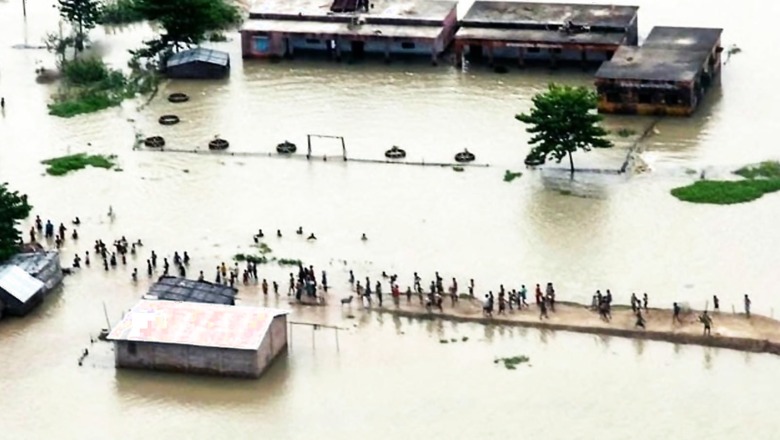
views
Rivers rarely change course. But when they do, they may bring disastrous consequences and have the potential to wipe out cities altogether. Now a new study analysing over five decades of global data has found that these risks of rivers abruptly changing their course could escalate due to changes in climate and land-use patterns.
The team of scientists at UC Santa Barbara led by Sam Brooke used 50 years of satellite imagery starting in 1973 and documented as many as 113 such events in rivers across the globe to understand why and when they changed their course. The team corroborated the satellite data with theoretical and experimental work conducted over the last decade and recently published the findings in peer-reviewed journal Science.
The study also examined the 2008 event, when the Kosi river in Bihar changed its path and triggered massive floods that killed at least 400 people and displaced nearly three million. “Around 330 million people live on river deltas worldwide, and many more live along river corridors. We need to understand how river mobility will change in response to climate change and anthropogenic interference,” said Vamsi Ganti, from UCSB’s Department of Geography, who was part of the study.
Understanding avulsion
A river may jump course only once a decade, once a century, or even less. Scientists use the term “avulsion” to describe a rare event in which a river abruptly abandons its established channel for another, resulting in devastating flooding. Sometimes, large floods can also force a river to forge a new path across the landscape.
Unlike the long-term gentle meandering migration of a river’s course across floodplains and deltas, these stochastic and extremely unpredictable events can have all kinds of consequences, from triggering floods to creating fertile deltas. This could either happen at the base of the mountain where a river exits the confined channels onto the open valleys, or in a river’s backwater zone downstream where the sea levels affect the flow, or when sudden intense flooding and sediment transport can push a river to change its path far upstream.
Scientists have long been trying to build theories about where avulsions occur using experiments and computational modelling, and a few case studies to help predict these natural disasters and save lives. But, these incidents have been so elusive and rare that making direct observations has been challenging, which the team overcame through a half-century of remotely sensed data, and analytical techniques.
Increased risks of disasters upstream
A change in the course is mostly linked to the slope of the channel and sedimentation in the backwater zone of a river – the most downstream reach of coastal rivers where the flow is slow and channel slope is low. However, the team discovered that a number of the events called avulsions were in fact located farther upstream of where they would be normally expected. Not only that, but they also found that they occurred most frequently in steep, sediment-rich rivers in tropical environments.
Increasing sediment load is another major concern. Avulsions occur when and where a river fills up with sediment, which chokes up the channel to the point where it jumps somewhere else, and the increasing sediment transport can push the avulsions really far upstream. All this is disconcerting, as it could expose the local communities living upstream to flooding hazards that they have never previously experienced, said the team. The changing climate and land use could further make it worse, as they will cause more flood-driven erosion, which could make avulsions more common upstream.
According to the team, the findings can be helpful in developing a framework to help predict when and where future avulsions might occur. “Although avulsions are very rare, when you’re looking at practically every single delta on Earth, you’re going to get lucky on a few of them,” said co-author Austin Chadwick from the University of Minnesota.
Climate change
Rising sea levels and longer floods have been known to shift avulsion sites upstream of their historic locations. The study goes on to show that climate and land-use change can also push avulsions inland on rivers. This means that even avulsions confined to the backwater zone could occur farther upstream, exposing people to disasters.
Agriculture, deforestation, development, and resource extraction are also impacting the location of these events. “If you change land use — and therefore the amount of sediment supplied to certain rivers — you can take a river that is currently experiencing backwater-scaled avulsions and shift it into the high sediment supply-modulated avulsions category,” said Ganti, explaining how human activities could affect the way rivers flow, and gradually change their course. “This is the regime that can jump course far upstream.”
According to lead author Sam Brooke, the study makes clear how the avulsion location on deltas is sensitive to changes in sea level, sediment load, and flood duration and intensity — all of which are subject to change as climate changes globally and more rivers are dammed, controlled, and manipulated by human development. Brooke is confident that the new framework will help the team to predict a potentially hazardous inland migration of a river’s preferred avulsion location.
Read all the Latest News here




















Comments
0 comment